MPC takes viewers on a fast paced, first-person POV ride with an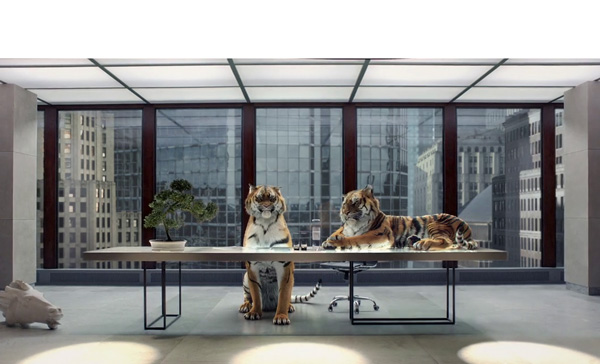 ambitious Virgin Atlantic customer, encountering tigers, CG crowds,
ambitious Virgin Atlantic customer, encountering tigers, CG crowds,
airliners and clouds.
MPC Lets It Fly for Virgin Atlantic |
| MPCworked with director Sam Brown from Rogue Film and agency adam&eveDDB on a new 80-second spot for Virgin Atlantic that flies in a new direction - following close beside a customer as he pursues an ambitious idea, flashing to life with a spark. Shot mainly in first person POV,‘Let it Fly’races along at a fast pace as the hero encounters tigers, CG crowds, airliners and clouds, all flowing from one exciting challenge to the next linked by clever, smooth transitions. The story shows what one person can go through to make an idea happen. |
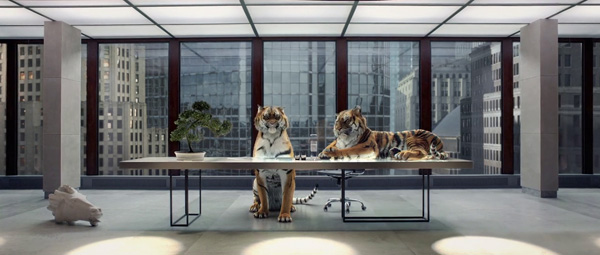 |
|
A Hero’s JourneyAs the hero’s journey gets underway, he confronts a monumental statue that recalls the Lincoln memorial, brought up to date for the business age. It was concepted, built in 3D and appears in a sequence that plays with perspectives and lighting to make the statue loom over him. Carsten said, “The statue was important to nail early on, not only to get the look right to meet Sam's vision but also the camera move so that it could be reproduced on the shoot. The scale of the statue, timings and source of the lights were established during pre-production and finessed after the shoot. “The spot’s tiger scene was also developed pre-shoot to get the pose and positions established. Then, once we had the plates we would be able to develop the tiger animation straight away. We also shot additional plates to cover any interactions with the practical set, as well as fur references for the modulating lighting.” Because the storyboards were quite detailed and had been finalised from an early stage, they knew the timings they had to play with, without waiting for any rushes. Also, by working very closely with Sam, the director, throughout the project, they had direct access to the key information needed to make the most of the development process – such as length of shots, lighting sources, references for matte paintings and so on. |
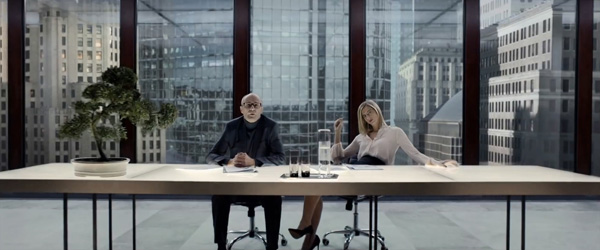 |
Transition TimeThe ad is structured as a series of vignettes that flow together with entertaining transitions. Some of these transitions are graphic such as a curtain opening onto a cloudscape. Some hinge on an idea, or depend on light, colours or camera angles. Some match the voice-over or sound track directly, others introduce the next theme in the background. The timing of each was well established as the shoot began. “Even so, we needed to keep an open dialogue going between Sam Brown, the editor Amanda James and our team at MPC to factor in the aspects that inevitably arise during filming,” said Ryan. “The tiger scene, for example, required variables to be locked down, because we were shooting it in several different passes on a Bullet motion control rig, with triggered lighting cues, in multiple locations. The timing of the scene was baked into the camera move, including lines of dialogue. Having a good understanding of the tigers’ action prior to shooting allowed us to allocate enough time to that section of the vignette, as Amanda was cutting on the fly.” Shooting TigersThis scene proved to be one of the most challenging. The viewer sees two tigers in an elegant office, calmly if menacingly regarding the protagonist from behind a large desk. Behind them is a cityscape, viewed through large windows. Suddenly, the lights go down leaving only their two pairs of eyes shining in the dark when, just as quickly, the lights return. But instead of the tigers we see two rather intimidating executives seated at the desk. “The idea was that we see the tigers first and then switch to our two office workers. The transition had to be as seamless as possible in terms of the position of the tigers and the people,” said Carsten. “As the actors were shot on a separate plate with all the lighting included, we also couldn’t steer away too much from this when lighting the tigers. The only way to get a nice transition between the two elements - CG tigers vs real people - was to switch off the lights sequentially again including the backdrop which was created entirely as a digital matte painting. |
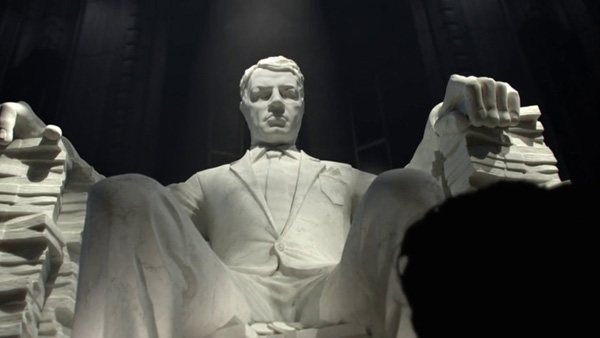 |
|
Monumental InspirationThe giant CG statue was concepted heavily in 3D from early on, knowing that the Lincoln inspiration was the key reference for size and materials as well as lighting. As they went through revisions and feedback over the two week period, it grew to a monumental size and underwent several changes. “The entire statue was modelled in ZBrush and later lit in Maya rendered with Arnold. We played around with light animation in order to show off the sheer size of it - almost like switching the lights on along the length of a big hall, a bit further down, rather than illuminating them all at once. This technique also helped us shift from the dark background in the live action footage around the actor, to a POV as all the lights come on sequentially.” This was, in fact, the point at which the view changes to mostly first person POV. Ryan said, “A wider-angle lens was chosen for the look of the ad. The field of view was actually greater than many representations of POV, where a slightly longer lens is analogous to real vision. But this style of lensing had been established at the pre-vis stage so that our modelling and layouts could take it into account, and the greater distortion on the plates was corrected for tracking.” |
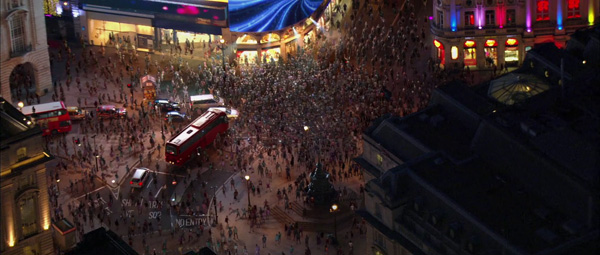 |
Crowd ControlEventually, the hero in the story does find success and we see shining aerial views of central London and New York by night, flowing with tremendous crowds. The crowds were created with 3D softwareMiarmy, using continuous collision detection to produce realistic movement. Carsten said, “The agency adam&eveDDB sourced city plates for the shots. Out team’s approach was to track them first and clean them up - which meant initially removing the existing people in the footage. Then we replaced them with our own crowds and reintroduced original people wherever possible. We then had to manually light the scenes in Arnold to get realistic shadows on the ground and highlights in the crowd. “MPC’s own crowd systemALICEis primarily designed to work with Renderman, the main render engine in MPC’s film department. Around two years ago MPC Advertising moved completely from mental ray/Renderman to Arnold. We have much faster turnarounds in commercials with tighter deadlines than film, so we are working with crowd software systems like Miarmy that support Arnold to make sure we can meet the requirements from our clients. “We did use our own MPC motion libraries and models because the requests from the agency and director in this case were quite specific. Over the years MPC has built up extensive libraries of characters and agents with motions, which is great to rely on for this sort of VFX heavy project with a tight turnaround.” Dreamliners and CloudscapesThe commercial includes two scenes of the Virgin Dreamliners sweeping slowly past camera into glowing cloudscapes. The 3D team modelled the Dreamliners completely accurately based on CAD models and blueprints. “As product shots for Virgin Atlantic, these shots were among the most important, so we were constantly checking the right specs for wing lengths, spans, lengths overall, engines and windows - all within the short time we had in the model stage,” Carsten said. |
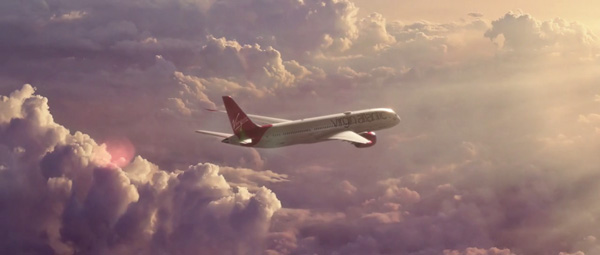 |
|
“We needed to nail the animation first with all the rough cloud elements and, working with our DMP artist, determine where he had to use his clouds and at which depth regarding the overall scene and dimensions. A combination of Photoshop and Maya was used for the pre-vis and camera animation and the positioning of the clouds. Later on, we imported all the cameras and layers into Nuke to finish the shot, giving us a much faster approach than CG clouds for the two shots.” The shot construction meant the boundaries between CG, DMP and compositing were not rigid. In the composite they finessed the cloud edges, added optical effects and additional lighting elements, and applied a final grade. www.moving-picture.com |


















